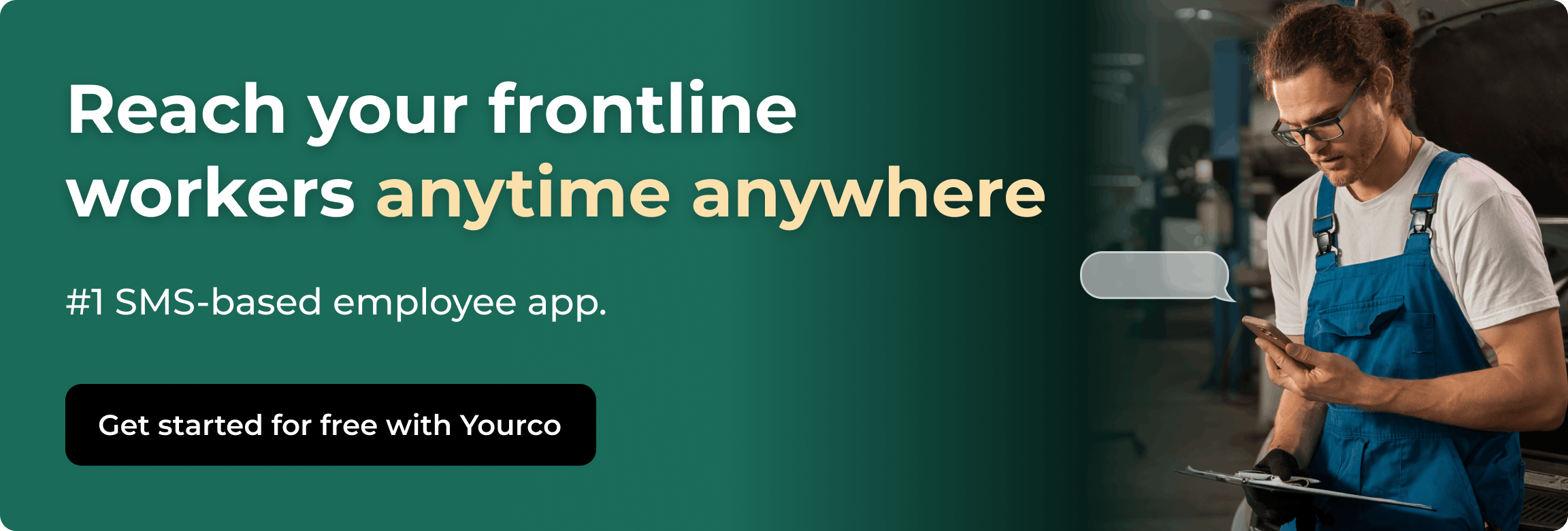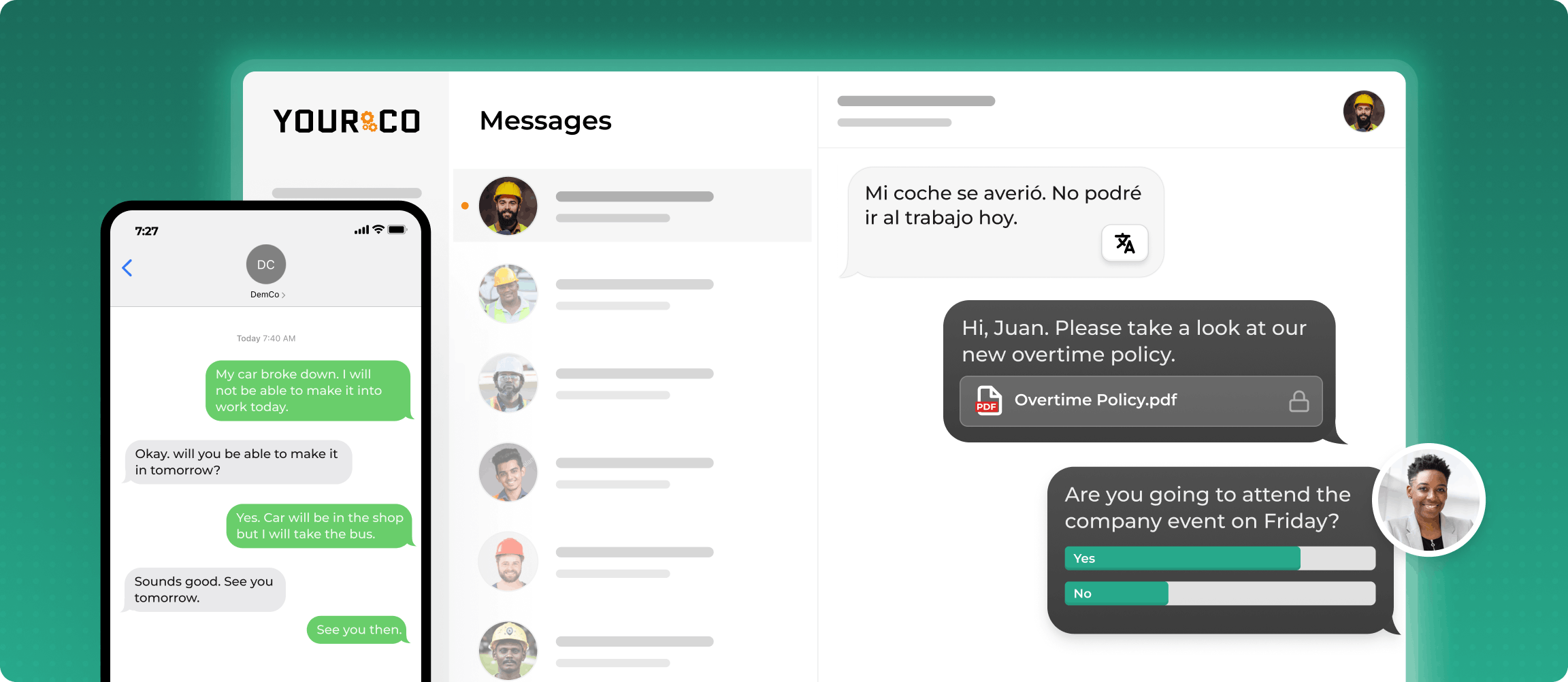Why Multi-Location Employers Are Failing I-9 Compliance and How to Fix It


Form I-9 compliance is one of the most complex responsibilities HR leaders face, especially when managing multiple locations. Each new hire requires accurate and timely verification, yet errors such as incomplete, outdated, or missing information can result in steep fines. For organizations with multiple worksites, these challenges quickly multiply with remote hires and independent contractors.
This guide outlines the most common pitfalls for multi-location employers, clarifies when Form I-9 requirements apply to contractors, and shares practical strategies to strengthen your processes and improve communication.
This information is provided for informational purposes only. For legal interpretation, consult qualified professionals or official USCIS and ICE resources.
What Is Form I-9 and Why Does It Matter?
Every new employee in the United States must complete Form I-9 to confirm identity and work eligibility. According to USCIS, you must complete employment verification within three business days of the date of hire (i.e., the first day of work for pay).
Treating employment verification as a non-negotiable first step in onboarding keeps your hiring process running smoothly across all locations and can help you avoid costly surprises. Skip this step or miss the deadlines, and you could be facing federal fines or disruptive audits that pull your managers away from daily operations.
How to Determine If an I-9 Is Needed
The Form I-9 applies to every individual you put on payroll and issue a W-2, regardless of their role, location, or employment status. A part-time cashier, a temporary warehouse associate, a contract delivery driver, a seasonal worker, or a software engineer — whether they're U.S. citizens or working under a visa — all follow the exact same verification process. There are no exceptions based on citizenship status, benefits eligibility, job title, full-time versus part-time status, or whether the work is desk-based or non-desk. Every employee must be verified.
While legitimate independent contractors who receive 1099s typically do not require I-9 verification from your company, it may be a good idea to request one, as we'll discuss in detail later in this guide.
How to Fill Out Form I-9
Form I-9 works in two parts, each with separate deadlines:
- Employees must complete Section 1 with their personal details and attest to their work authorization no later than their first day of employment.
- Employers must review the employee's original documents (e.g., passport, or driver's license plus Social Security card) and complete Section 2 within three business days.
Missing either deadline is considered a violation, even if the employee is fully authorized to work.
Common I-9 Compliance Challenges for Multi-Location Employers
The more locations you manage, the harder it becomes to keep every form correct, timely, and audit-ready. You might assume Boston and Boise follow the same process, but audits reveal significant gaps once paperwork leaves headquarters.
Inconsistent Workflows Across Sites Create Violations
Inconsistent workflows create the biggest problems, especially when hiring managers at different sites follow different procedures. Let’s say one location photocopies every document while another skips copies entirely. A third location forgets to sign Section 2. These variations can make audits more complicated, time-consuming, and difficult to defend when inspectors find different processes at each site.
Training Gaps Multiply as Managers Cycle Through Locations
Training challenges multiply whenever new managers cycle through, especially in high-turnover industries, and each transition risks losing crucial verification knowledge. Without consistent, trackable training, one shift lead relies on memory while another uses an outdated checklist. Mistakes happen without anyone noticing.
Remote Hiring Complicates Document Verification
Remote and hybrid hiring create additional complications. Now that temporary pandemic flexibilities for virtual document inspection have ended, every employee needs an in-person review of original documents within days, even those hired three states away. Coordinating physical document verification through notaries or authorized agents can delay onboarding or push teams to take shortcuts.
Communication Breakdowns Leave Managers Uninformed
Communication between corporate HR and field managers breaks down at critical moments. Headquarters updates policies, but the message gets buried in crowded inboxes or never reaches supervisors who lack email access. Without real-time visibility, you discover missing signatures only when an auditor requests them.
Contractor Confusion Leads to Misclassification Risks
Contractor confusion remains widespread. Many supervisors believe that paying someone on a 1099 automatically exempts the company from verification requirements. Clear guidelines on who needs verification must reach every hiring manager to prevent accidental violations from misclassification.
Do Independent Contractors Require Form I-9?
You usually do not complete Form I-9 for a legitimate independent contractor, but you may face serious fines if that worker is misclassified or lacks work authorization.
As a general rule, contractors are exempt because they control how the work gets done, uses their own tools, and often serve multiple clients. In that case, the verification responsibility stays with their own business, not with you. If the contractor label exists only on paper — that is, you set their schedule, direct each task, and provide the equipment — ICE may reclassify the person as an employee and demand a missing form and sometimes levy significant penalties.
To determine where your worker stands, look at control and independence. If most of these points describe the relationship, verification is generally unnecessary.
- They decide how the job is done and in what order
- They invest in their own tools, equipment, or facilities
- They offer services to several clients, not just you
- They can realize a profit or loss based on managerial skill
- Your oversight focuses on the final result, not the daily methods
It’s always a good idea to keep written contracts that clarify each party's responsibilities and include work authorization assurances. If any facts change — especially who controls daily work — it’s best to revisit the classification before an auditor does.
Regardless of an employee’s contractor status, you cannot knowingly hire someone who is unauthorized to work in the United States. If ICE shows that you ignored obvious red flags, penalties can match those for employee violations.
This information is provided for general awareness only. For advice on your specific situation, consult a qualified immigration or employment attorney.
Strengthen I-9 Compliance Across All Your Locations
The fastest way to close verification gaps in a multi-site organization is to standardize every step — then watch the process from one central dashboard.
Centralize Forms in a Single Digital System
Start by moving forms out of filing cabinets and into a single digital system. This keeps every location using the same version, flags missing information right away, and lets you see completion status at a glance.
Digital platforms send automatic alerts when Section 2 is overdue or when work authorization is about to expire. No more paper shuffle, and everyone stays consistent.
Provide Consistent Training With Trackable Completion
Technology helps, but your managers need clear training too. Every person who handles hiring needs simple, documented guides. Follow up with a quick quiz or sign-off to keep expectations clear and trackable.
Don't forget regular refreshers — regulations change, like when remote inspection rules ended in 2023 and went back to requiring in-person document review. Schedule training updates alongside policy changes so you're not scrambling at the last minute.
Build Regular Self-Audits Into Your Routine
Build self-audits into your routine. A quarterly spot check works well. For instance, you can pull ten percent of recent hires from each site and review their forms. This catches errors early and shows good faith if ICE ever shows up.
Proper error correction requires one strike-through, adding the correct information, dating it, and initialing. Pair quarterly checks with a deeper annual audit to make sure every location follows the same process, as recommended by compliance experts.
Implement Secure, Centralized Storage Systems
Secure, centralized storage completes the picture. Most companies keep each form for three years after hire or one year after the employee leaves, whichever is longer. Compliant companies often store files in an encrypted system with role-based access to keep data safe while still accessible during audits.
Track Reverification Dates Automatically
Don't forget reverification tracking. High-turnover teams can't afford to miss when work permits expire. Digital systems send reminders to both managers and employees, preventing last-minute rushes and potential violations.
Standardize, train, audit, secure, and track. When every location follows the same straightforward routine, employment verification shifts from a persistent worry into a manageable, predictable process.
Reach Non-Desk Workers With Timely Compliance Reminders
Even the best verification policy falls apart if managers and frontline teams never see the reminders. You need a channel that cuts through language barriers, shift changes, and the reality that many workers don’t have company email.
The biggest hurdle is reach. Welders, cashiers, and drivers check their phones between tasks, not their inboxes. Some speak limited English, others own basic phones, and many rotate shifts that make scheduled communications impossible. Printed notices and inbox alerts create gaps you only discover during an audit.
Text messaging fills those gaps effectively. A standard SMS lands on any phone, old or new, and appears within seconds. Since messages go out individually, workers never see each other's numbers, protecting privacy while keeping conversations focused. Effective employee communication for deskless workers relies on reaching people where they already are: on their phones.
Multilingual reminders become simple when your platform handles translation automatically. Draft one clear English template, select the worker's preferred language, and the system delivers an instant translation. Workers can reply in that same language, and you receive the response in English, eliminating the back-and-forth that delays verification checks.
Here are five practical SMS prompts you can schedule:
- "Hi Manny, please bring a copy of your ID to the office by Thursday so we can finish your paperwork."
- "Reminder: Section 2 needs your review by end of day Wednesday."
- "Your work authorization expires in 30 days. Let us know when you have updated documents."
- "We still need a signature on your verification form. Text us when you have time today."
- "New compliance guideline update. Click on this link to learn more."
Keep each message direct, action-oriented, and tied to a clear deadline. The platform records every send and reply, creating an audit-ready log you can export when needed. Since contacts sync automatically with your HRIS, new hires receive onboarding reminders instantly, while terminated numbers drop off the list.
Clear, timely texts turn compliance from a paperwork chase into a predictable routine. Meeting workers where they already are — on their phones — closes communication gaps before they become compliance risks.
Build a Compliance Culture Without Overwhelming Your Teams
When verification checks feel like routine housekeeping instead of red-tape, managers follow the rules and errors drop. The trick is weaving compliance into everyday workflows, not stacking it on top of them.
Connect Compliance to Time Savings, Not Fear Tactics
Start by showing supervisors why accuracy matters. A missing signature can bring fines during an ICE audit, but the bigger cost is the wasted hours spent searching for documents when inspectors show up.
Framing compliance as a way to save time helps frontline leaders see it as self-preservation rather than extra paperwork. Teams that are organized can finish inspections in hours, while unprepared ones spend days hunting for files and answering follow-up questions.
Focus Training on "Why" Instead of Just "How"
Shift training from "how to fill the boxes" to "why the boxes exist." When managers understand that Section 2's in-person document review protects the company from knowingly hiring unauthorized workers, they double-check dates and IDs more carefully.
Short, scenario-based refreshers work better than annual slide decks. Try the weekly tip approach: share one insight per week through text or a quick huddle so knowledge sticks without information overload.
Create Clear Channels for Quick Questions
Keep questions flowing by posting a dedicated hotline number or SMS keyword that routes straight to HR. Internal reviews reveal that more than half of technical mistakes surface because supervisors were unsure how to correct a form and stayed silent. A clear channel encourages quick clarification before errors spread.
Frame Compliance as Protection, Not Punishment
Tone matters tremendously. Frame compliance as protection for both the business and its people. For example, "We safeguard everyone's right to work here," indicates support, rather than a threat, reducing resistance and building buy-in.
Maintain Consistent Messaging Across All Touchpoints
Build consistency into your messaging by using the same plain-language templates across onboarding packets, shift-start reminders, and company-wide texts. This prevents mixed instructions that confuse teams. Central HR can create the templates while local managers personalize timing.
Rotate reminders sparingly to avoid notification fatigue while keeping compliance visible. Share the new-hire checklist today. Then support with re-verification prompts next month, but don't drown teams in constant alerts.
Stop I-9 Violations With Instant Employee Communication
Most multi-location employers stumble on verification rules because procedures differ from site to site, and important reminders never reach the right people. When processes and messages live in one place, teams stay in sync and mistakes shrink.
Many audited companies have said that penalties happen due to inconsistent paperwork, missed deadlines, and unclear follow-ups. A single, centralized workflow fixes half the problem; the other half is making sure every manager and new hire hears the same instructions, on time, in a language they understand.
That's where Yourco's employee texting platform helps. You can text deadline alerts, document checklists, or policy changes to any phone — no apps, no email required. Built-in AI-powered translation covers more than 135 languages, so a night-shift supervisor in Miami and a weekend hire in Toronto both get clear steps without confusion.
Every text is stored automatically, giving you a searchable log for audits and internal reviews. This record-keeping keeps legal teams happy and saves hours of digging through spreadsheets. Messages sync with your HRIS system, meaning new hires automatically receive compliance reminders while terminated employees are removed from the system.
With Yourco, you can also schedule messages for different shifts, create custom templates for various verification steps, and use automated reminders for expiring work permits. The platform handles message delivery and provides detailed analytics showing which locations have the highest compliance completion rates.
Try Yourco free today or schedule a demo and see the difference the right workplace communication solution can make in your company.
Frequently Asked Questions
Do remote hires follow different I-9 procedures?
No, the rules are the same. You still need someone to check identity documents in person within three business days of hire. You can assign this task to an authorized representative — like a notary, another employee, or even a trusted household member — to handle the face-to-face inspection and complete Section 2. The temporary virtual review option ended, so skipping the physical check creates immediate audit risk.
How often should I run internal I-9 audits?
At least once a year works for most companies, but quarterly checks help if you have high turnover or seasonal hiring spikes. Regular self-audits let you fix simple mistakes — missing dates, unchecked boxes — before an inspector finds them. Documenting those corrections shows you're making a good effort if regulators come calling.
Are independent contractors ever covered by Form I-9?
Usually no. True contractors control how they work and serve multiple clients, so you don't need to complete verification for them. But if you treat someone like an employee — setting their schedule, supplying tools, paying hourly wages — ICE may say they're misclassified and expect a form on file. Penalties for intentional misclassification match employee violations, so review each arrangement carefully and consult legal counsel.
What's the easiest way to keep multi-location I-9 records consistent?
Centralize everything through a digital platform. This funnels every new hire through the same process, flags errors right away, and gives you a single dashboard to track missing forms or expiration dates. Standardized workflows eliminate guesswork across locations and make pulling records during an audit much simpler.




